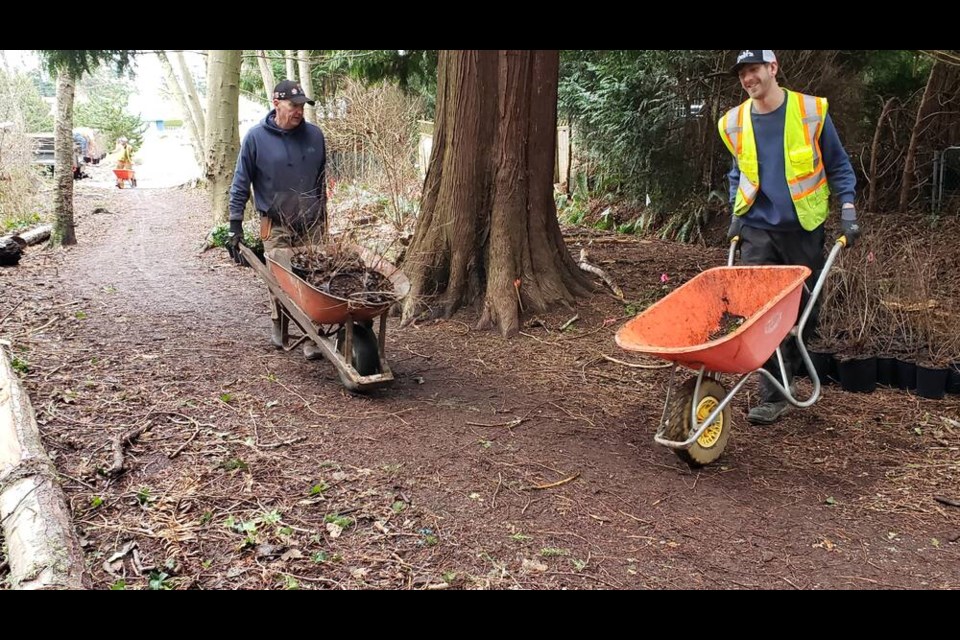The work that’s turning Fred Gingell Park into a more natural landscape is continuing in nearby Pebble Hill Park in Tsawwassen thanks to countless hours of volunteers hauling out invasive plants and putting B.C.-born shrubs and trees in their place.
James Reeve is coordinating the effort helped by Blake Willson, a local tree expert.
“I think it’s going to be spectacular actually, when it’s said and done,” Reeve said. “Right now, it’s just full of invasive species … and these things just crawl up and around and go up the trees and block out the sun and they do all sorts of things that are very detrimental to the indigenous species that are in there.”
For instance, blackberries just grow over everything, said Reeve who lives nearby.
“It’s a real community project. The City of Delta is providing all the plants for us, which is terrific. They’ve been extremely helpful in making this a reality,” he added.
So far, in the last half year, about 500 invasive blackberry plants have been dug out by their roots, along with the creepy English ivy, Portugal laurel and daphne.
In their place are planted Nootka rose, salmonberry, thimble berry and snowberry bushes, sword ferns, red alder, big leaf maple, vine maple, cedar and grand fir and Douglas fir and others.
“It was fairly heavily invaded by English ivy and blackberry, and we’ve actually put in quite an enormous amount of effort into removing both of them,” said Willson.
The blackberry bushes have to be dug out by shovel only so surrounding vegetation isn’t damaged.
Volunteers are under the supervision of the City of Delta.
Much of the labour is provided by those who live nearby and want to see their park in as much of a state as nature intended.
There’s already a good base of indigenous vegetation in the park already, he noted.
“We have some real enthusiastic people,” said Willson. “Some of them are coming out, two or three days a week. We’re excited by it. I’m just amazed at the enthusiasm we’re getting from local people.”
He’s also tagged some trees with QR codes that people can scan for instant reference.
About 320 native plants have already been put in the ground to be followed by another 125 next month, followed by more in the fall.
Willson said they’re about three-quarters way through the first pass of invasive plant removal, but those must be followed up with subsequent, less onerous visits to continue plucking out the invaders.
Both have worked on restoring Fred Gingell Park where work is also ongoing.



